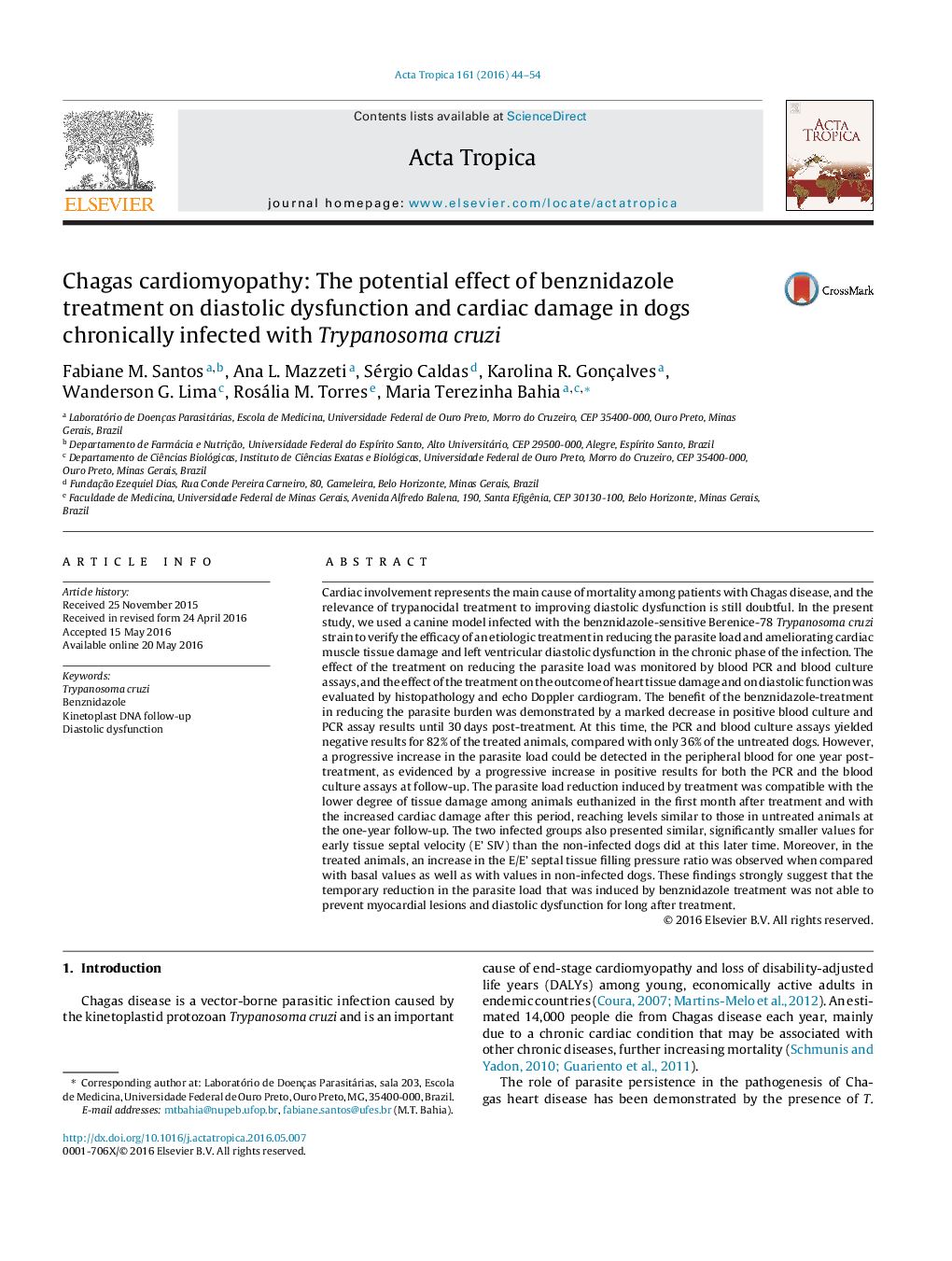| کد مقاله | کد نشریه | سال انتشار | مقاله انگلیسی | نسخه تمام متن |
|---|---|---|---|---|
| 3393724 | 1592763 | 2016 | 11 صفحه PDF | دانلود رایگان |

• The benznidazole treatment induced a transient reduction in the parasite load.
• A progressive increase in the parasite load could be detected a long after treatment.
• The treatment was unable to prevent the development of diastolic cardiac alterations.
• The left ventricular diastolic dysfunction can be correlated with heart damage.
Cardiac involvement represents the main cause of mortality among patients with Chagas disease, and the relevance of trypanocidal treatment to improving diastolic dysfunction is still doubtful. In the present study, we used a canine model infected with the benznidazole-sensitive Berenice-78 Trypanosoma cruzi strain to verify the efficacy of an etiologic treatment in reducing the parasite load and ameliorating cardiac muscle tissue damage and left ventricular diastolic dysfunction in the chronic phase of the infection. The effect of the treatment on reducing the parasite load was monitored by blood PCR and blood culture assays, and the effect of the treatment on the outcome of heart tissue damage and on diastolic function was evaluated by histopathology and echo Doppler cardiogram. The benefit of the benznidazole-treatment in reducing the parasite burden was demonstrated by a marked decrease in positive blood culture and PCR assay results until 30 days post-treatment. At this time, the PCR and blood culture assays yielded negative results for 82% of the treated animals, compared with only 36% of the untreated dogs. However, a progressive increase in the parasite load could be detected in the peripheral blood for one year post-treatment, as evidenced by a progressive increase in positive results for both the PCR and the blood culture assays at follow-up. The parasite load reduction induced by treatment was compatible with the lower degree of tissue damage among animals euthanized in the first month after treatment and with the increased cardiac damage after this period, reaching levels similar to those in untreated animals at the one-year follow-up. The two infected groups also presented similar, significantly smaller values for early tissue septal velocity (E’ SIV) than the non-infected dogs did at this later time. Moreover, in the treated animals, an increase in the E/E’ septal tissue filling pressure ratio was observed when compared with basal values as well as with values in non-infected dogs. These findings strongly suggest that the temporary reduction in the parasite load that was induced by benznidazole treatment was not able to prevent myocardial lesions and diastolic dysfunction for long after treatment.
Figure optionsDownload as PowerPoint slide
Journal: Acta Tropica - Volume 161, September 2016, Pages 44–54